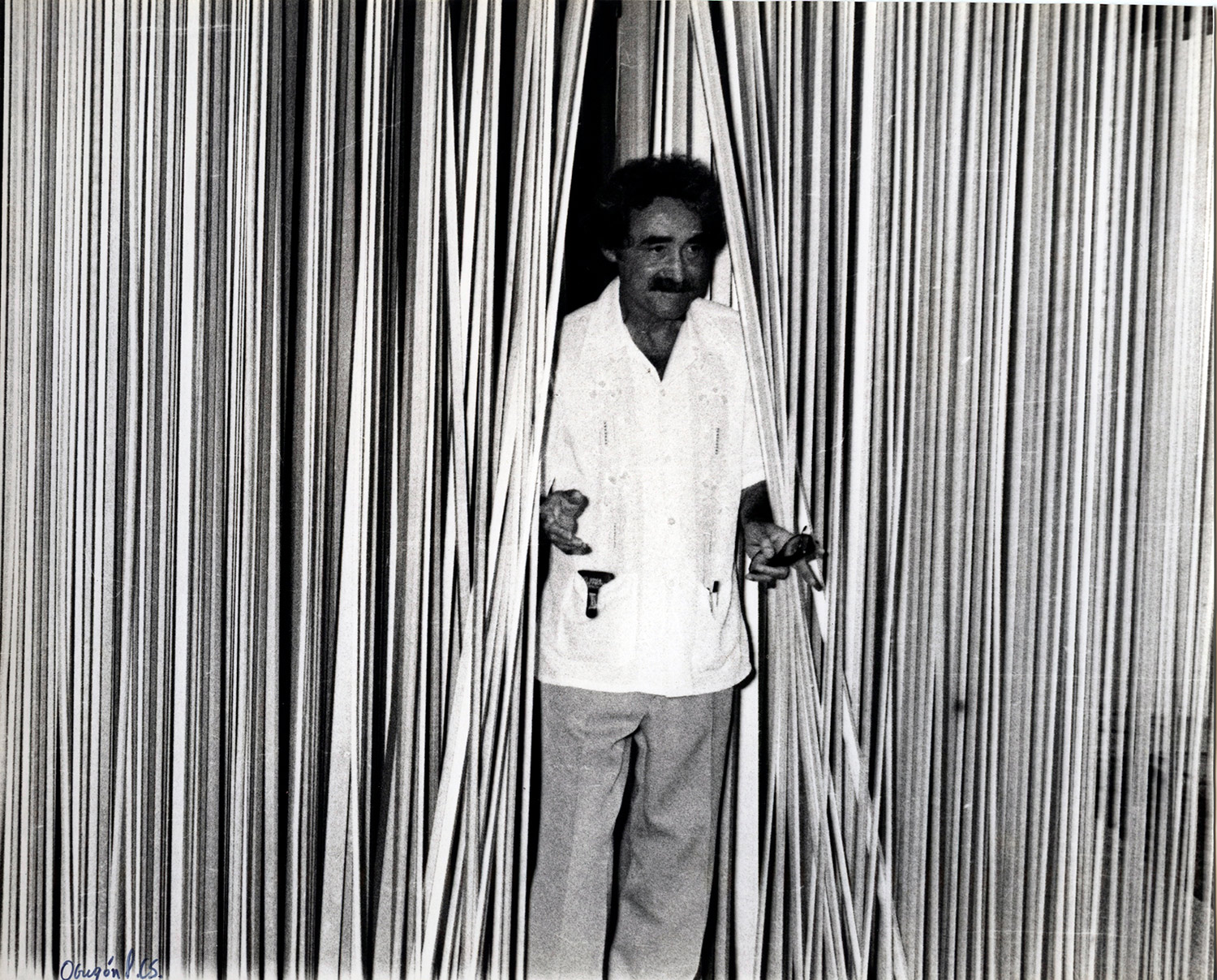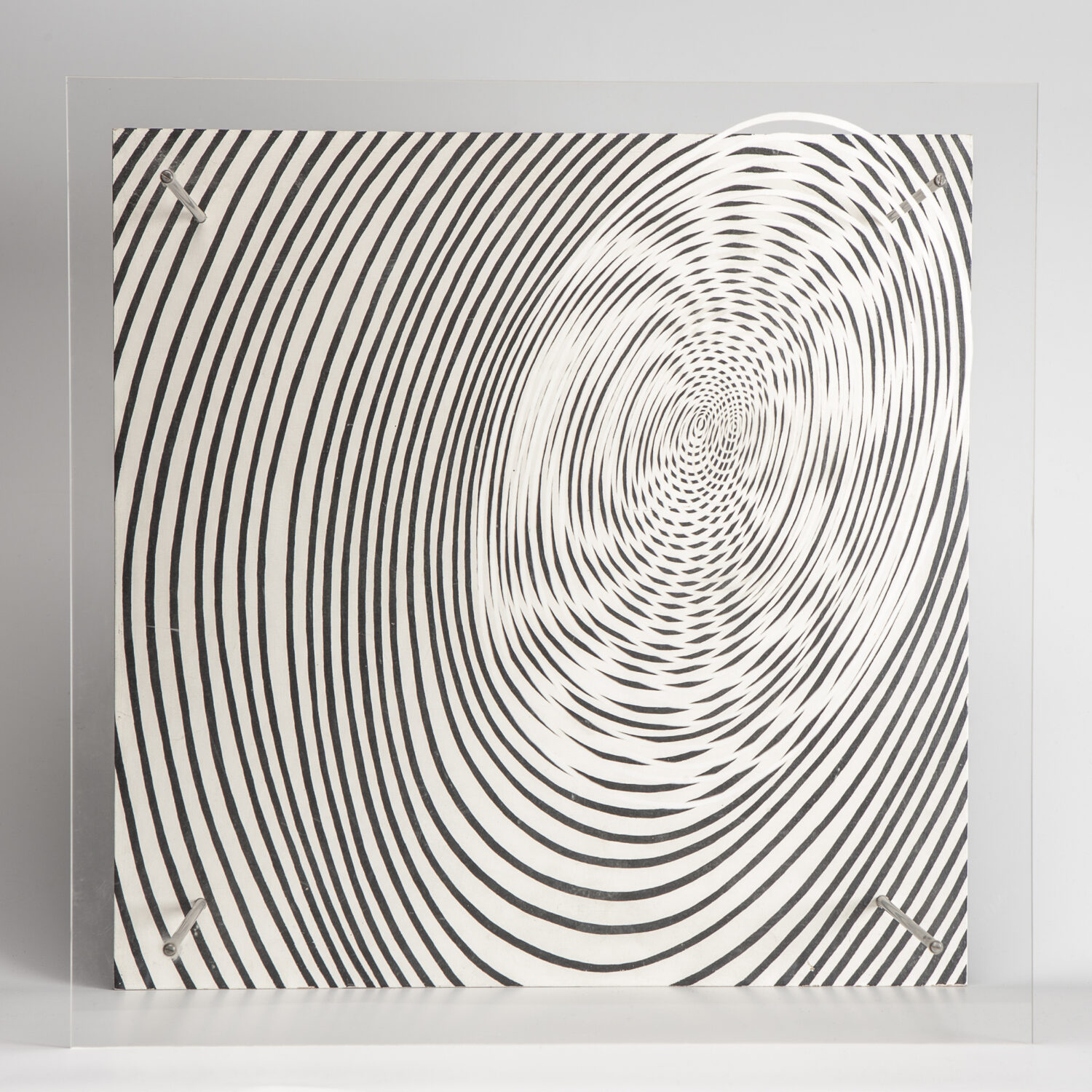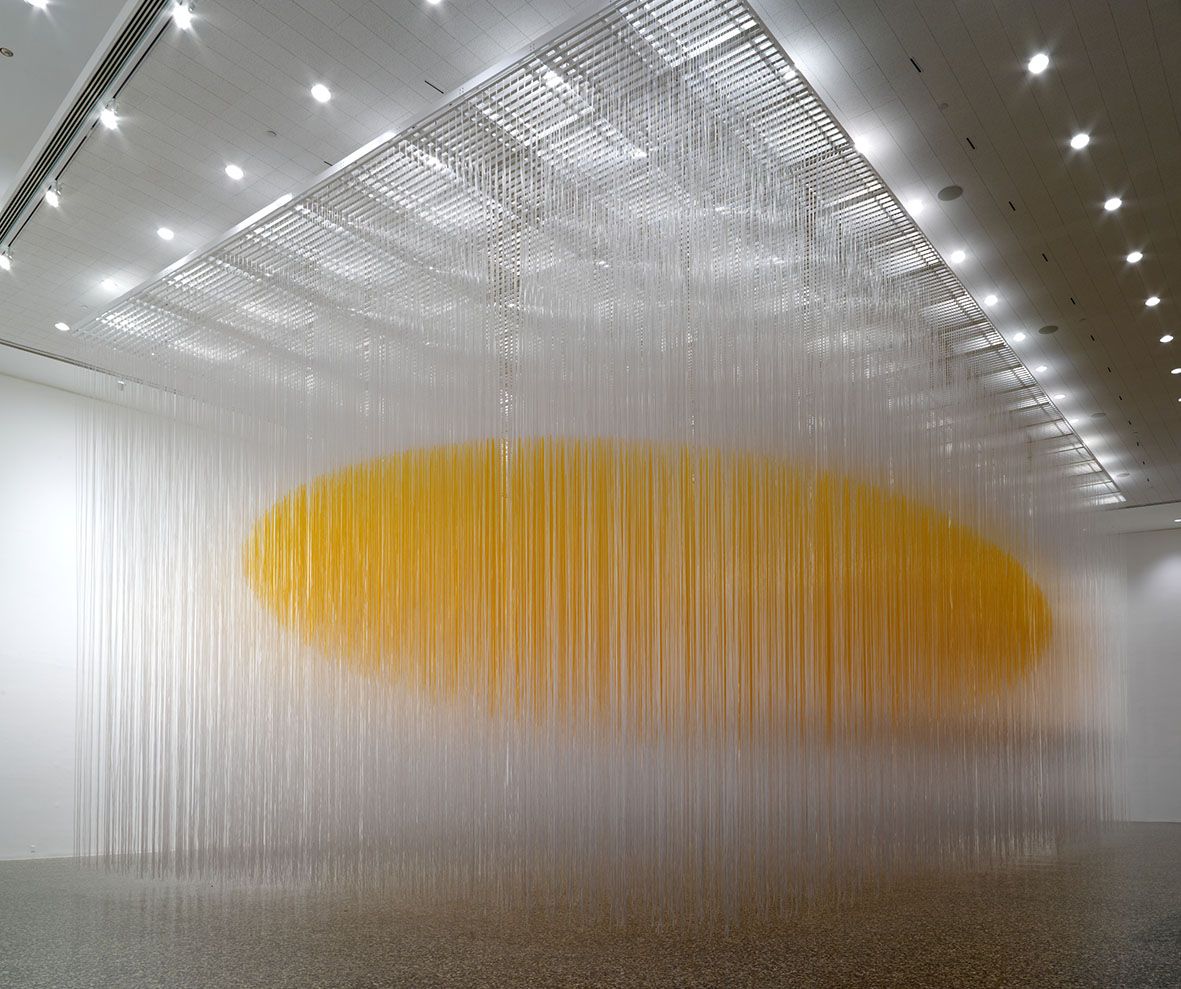How Venezuelan Artist Jesús Rafael Soto’s Immersive Installations Redefined Kinetic Art
By Something CuratedBorn in 1923 in Ciudad Bolívar, southeastern Venezuela, Jesús Rafael Soto began his artistic career as an illusionistic painter. Today, he is best known for his large-scale immersive sculptures that consist of numerous suspended elements, through which viewers can physically navigate — or as he puts, “penetrate.” Soto’s ingenious environments manipulate the interaction of solidity and emptiness, blurring the boundary between what’s real and not.
Soto’s works are characterised by their dynamic and interactive nature. Through a precise artistic language that utilises the effects of movement, his installations uniquely reimagine the possibilities of kinetic art through participation. While he is considered a pioneer of kinetic art, Soto’s work also remains closely associated with op art — the geometric forms in his early paintings from the 1950s, in particular, bear an irrefutable similarity to works that later emerged from the movement.

As a student, Soto attended the Escuela de Artes Plásticas in Caracas in the 1940s, during which time he first encountered modern European art. The works of artists such as Paul Cézanne and Pablo Picasso played an important role in shaping Soto’s own artistic vision. Following his graduation, Soto served as director of the Escuela de Bellas Artes in Maracaibo, Venezuela, until 1950 — when he decided to relocate to Paris.
Shortly after his arrival in the French capital, he was embraced by Los Disidentes, a collective of Venezuelan artists on a mission to invigorate the contemporary art landscape of their homeland, as well as change perceptions of Venezuelan art globally. During his early years in Paris, Soto also became associated with figures including Israeli artist Yaacov Agam, Swiss sculptor Jean Tinguely, and Hungarian-French artist Victor Vasarely.

Kinetic art is a term that today most often refers to three-dimensional sculptures and figures such as mobiles that move naturally or are machine operated, though its roots lie in paintings that extend the viewer’s perspective of the artwork and incorporate multidimensional movement. Before Soto fully dove into his exploration of kinetic art in a three-dimensional context, the artist experimented with optical effects on canvas.
One of Soto’s earliest techniques to produce a sense of movement on canvas was to use vertical wires placed in front of a black and white lined background, creating the visual effect of flickering movement as the observer passed by — a little bit like a holographic image. He once remarked, “Artistic creation is a force that should ideally be directed towards exploring space, the universe, the infinite realities surrounding us, of which we are barely conscious.”

In 1955 Soto participated in the seminal group exhibition Le Mouvement at Galerie Denise René in Paris — a key event in the history and development of kinetic art, featuring works by Alexander Calder, Marcel Duchamp and Vasarely, among others. Following the impact of this exhibition and the appetite for kinetic art that followed, through the 60s, Soto became almost entirely preoccupied with making linear, kinetic constructions employing industrial materials like nylon, Perspex, paint, and steel.
Soto’s works have been frequently showcased in major exhibitions throughout the world, from the Guggenheim in New York to the Centre Pompidou in Paris. In 1973, the Museo de Arte Moderno Jesús Soto opened its doors in Soto’s hometown of Ciudad Bolívar, showing works by the artist as well as pieces by those who inspired him. A venerable figure in art history whose work continues to influence contemporaries across disciplines, Soto passed away in Paris in 2005.
Feature image: Soto. s/t, 1969. Soto solo exhibition, Musée d’Art Moderne de la Ville de Paris, Paris, France, 1969. © André Morain. Photo: Jesús Rafael Soto